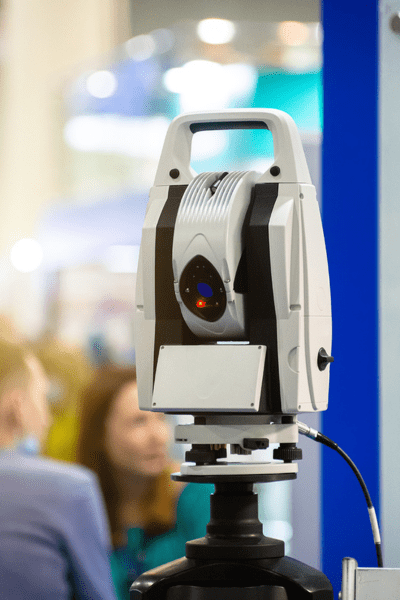What are the Differences Between a Faro Arm and a Laser Tracker?
In manufacturing and other industries where precision and accuracy are paramount, measuring tools play a critical role in ensuring quality and consistency.

Among the most commonly used tools are Faro Arms and Laser Trackers, which are highly accurate devices designed to provide precise measurements of objects and surfaces. However, while they may serve similar purposes, Faro Arms and Laser Trackers differ in several key ways. In this article, we'll take a closer look at the differences between these two types of measuring tools.
The key differences between a Faro Arm and a Laser tracker are range of motion, contact vs non-contact measurement techniques, accuracy of measurement, and cost. Faro Arms and Laser Trackers are both extremely useful when utilized the right environment and for the right applications.
- Faro Arms, also known as portable coordinate measuring machines (CMMs) or portable measurement arms, are compact and flexible devices that use a series of articulated sections to reach around obstacles and access hard-to-reach areas. They can be moved around freely and easily repositioned, allowing for quick and efficient measurements of objects and surfaces. Faro Arms typically have a range of motion of up to 7 feet and are often used in manufacturing and construction settings for dimensional inspection, quality control, and reverse engineering.
- Laser Trackers are stationary, tripod-mounted devices that use probe stylus to accurately measure the position and orientation of objects in three-dimensional space. They are highly accurate, with most models capable of measuring to within a few thousandths of an inch over distances of up to 100 feet. Laser trackers are often used in large-scale industrial applications such as aerospace, automotive, defense, and shipbuilding, where they can be used to measure the position and alignment of components during assembly.
Range of Motion
One of the main differences between Faro Arms and Laser Trackers is their range of motion. While Faro Arms have a relatively limited range of motion, typically up to 7 feet, Laser Trackers can measure objects and surfaces over much greater distances, making them well-suited for large-scale applications. This makes Laser Trackers ideal for measuring large components, such as aircraft wings or ship hulls.

Contact vs Non-Contact Measurement
Another difference between these two types of measuring tools is the way they operate. Laser Trackers use a contact-based measurement method, where a probe is brought into contact with the surface being measured. This method is ideal for measuring complex surfaces with intricate features or where precise measurements are required. However, contact-based measurement can be time-consuming and may not be suitable for delicate or easily damaged surfaces.
Faro Arms, on the other hand, typically have the option to use a non-contact measurement method, where a laser beam is directed at the object being measured. This method is faster and less invasive than contact-based measurement, making it ideal for measuring large and complex objects with delicate or easily damaged surfaces. However, non-contact measurement is less accurate than contact-based measurement, and the accuracy can be affected by factors such as the reflectivity of the target or the presence of dust or debris.
Cost
Another important difference between Faro Arms and Laser Trackers is their cost. Faro Arms are typically less expensive than Laser Trackers, making them more accessible to smaller businesses and organizations. Additionally, because they are portable and flexible, Faro Arms can be used in a wider range of applications, which can help to offset the cost.
Laser trackers, on the other hand, are more expensive and require a dedicated tripod mount and a clean, stable environment to operate effectively. As a result, they are typically used only in large-scale industrial applications.
Conclusion
In conclusion, both Faro Arms and Laser Trackers are highly accurate measuring tools that are widely used in manufacturing and construction. The key differences between the two tools are range of motion, measurement method, and cost.
NEED A QUOTE?
Simply fill out your name, number, and email below and someone from our team will contact you within 24 hours.




